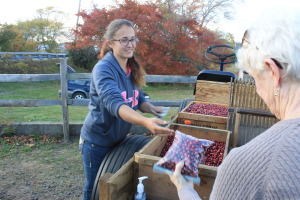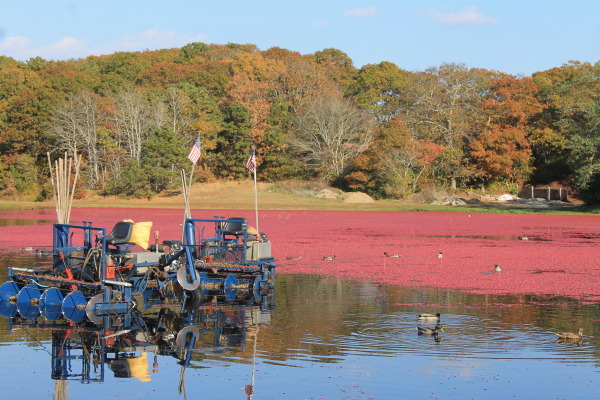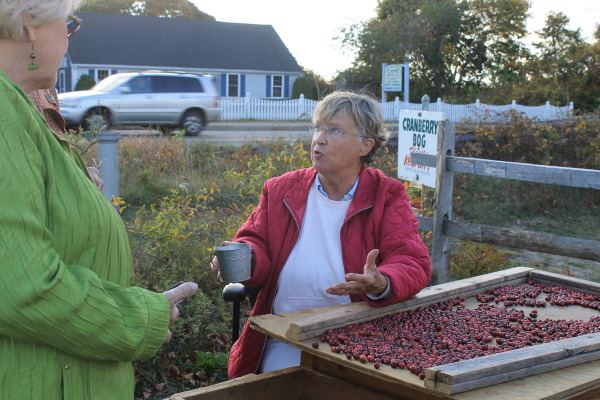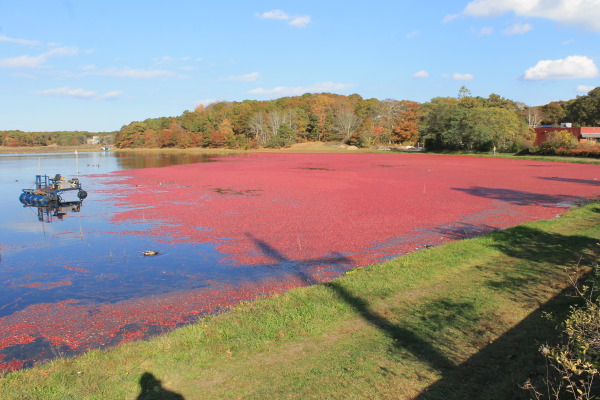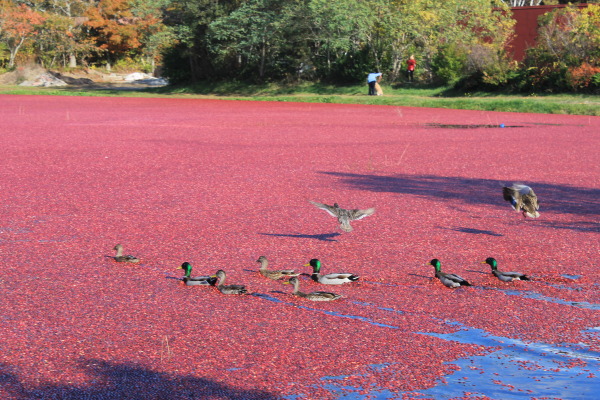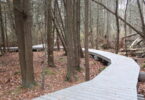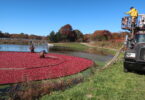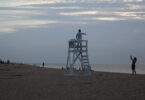WEST YARMOUTH – “It’s a sight to see,” said Ray McCardle of Dothan, Alabama, as he looked out at the red sea of floating cranberries for the wet harvest at the Wilson Cranberry Bog.
“We saw this on TV a few months back,” said McCardle, who, with his wife Sue, were visiting their son in Brockton and were on an afternoon tour of the Cape on Thursday. “We were driving by and my wife says, “There’s cranberries floating over there.”
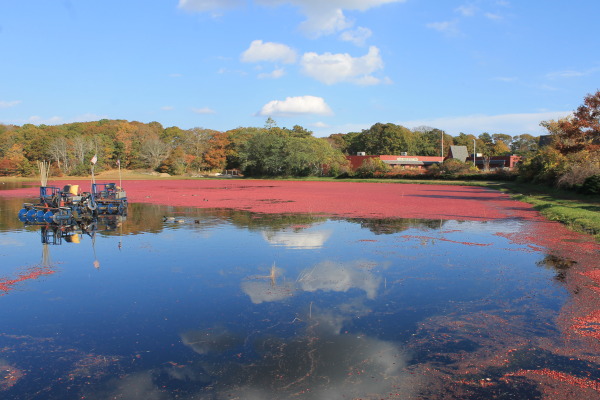 So they had to stop. “We only have peanuts and cotton back home,” he said.
So they had to stop. “We only have peanuts and cotton back home,” he said.
They stopped to look, take pictures, chat about cranberries, and buy some fresh dry-harvested ones. Cranberries were selling for $3 a quart and $8 for a gallon.
Operating the roadside stand was Lindsay Leboeuf and her grandmother, Brenda Stevens, who described her job as, “I’m sort of a sorter.” As she talked, she separated “the orangy-ones and the pink ones” so that what they sold were only perfect red berries.
Leboeuf is married to Chris Wilson, whose family operates the bog. “I just happened to meet this person who happened to have a cranberry bog,” she said. “I married into it.”
She didn’t know anything about cranberry farming when she was working at a D’Angelos sandwich shop and met met Wilson. Four months later she learned he had a cranberry bog. Five years later, she is a veteran at running the roadside cranberry stand.
Three years ago, she recruited her grandmother to help.
Now, the two of them sit along Route 28 with, on Thursday, a floating red backdrop and stream of sightseers and customers from all over the world. “I like teaching people about the different ways we do it on the property,” said.Leboeuf. There are 26 acres of cranberry vines on the property, she said.
The stand opened five years ago, said Leboeuf, because sightseers would stop and ask the workers on the bog questions, distracting them from their work. At first, she said, they gave the cranberries away but people insisted on paying, so a roadside business, for a few weeks every fall, was born.
“It’s fun,” said Leboeuf. “I get to meet people from England, France, all over the United States.”
The question she gets most, she said, is what is the difference between wet-harvested and dry-harvested cranberries, and the answer is that wet-harvested berries become saturated so that they can only be used for juice or sauce, while dry harvested berries can be used for a variety of things, said Leboeuf.
“I eat them raw all day long,” she said. “ I love them in cookies. I have my list I can rattle off. Cookies, breads, muffins. Pancakes are delicious with cranberries in them. And you can ferment then and you can make a Cape Codder. Poke some holes in the cranberries and put them in a bottle of vodka for a while. The freshest and best Cape Codder you’ll ever have.”
Of course, working in a tourist community alongside something so exotic as a cranberry bog can get some absurd questions too, she said. “ ‘Is this a cranberry bog?’ is one question I’ve gotten,” said Leboeuf. “And ‘Where do cranberries come from?’ ”
“At the end of the day when I pack it up and go back, I am grateful that we get to do this everyday, she said.”
And Stevens, while sorting said, “I like this tedious work. And I love working here because my granddaughter works here, and I love her. And l love cranberries, and I love the scenery, and I love being outdoors. It’s so New England.”
For more photos from across Cape Cod, please see Scenic Cape
– Please like us on Facebook.
— Brian Tarcy

